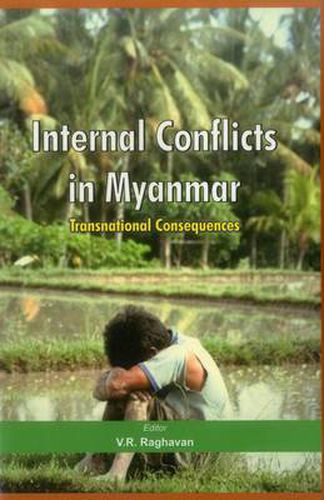Readings Newsletter
Become a Readings Member to make your shopping experience even easier.
Sign in or sign up for free!
You’re not far away from qualifying for FREE standard shipping within Australia
You’ve qualified for FREE standard shipping within Australia
The cart is loading…






This title is printed to order. This book may have been self-published. If so, we cannot guarantee the quality of the content. In the main most books will have gone through the editing process however some may not. We therefore suggest that you be aware of this before ordering this book. If in doubt check either the author or publisher’s details as we are unable to accept any returns unless they are faulty. Please contact us if you have any questions.
In the recent years, the interstate wars have declined and intrastate wars/ internal conflicts are on rise. Impacts of internal conflicts are no longer limited within a nation state, they incur international consequences of disturbing magnitude. Myanmar (Burma) is affected by two types of internal conflicts. The first is between the military government and various ethnic groups spread along the international borders with India, China, Laos and Thailand. These ethnic minorities speak different languages, have different cultures and have taken up arms. They seek to have a say in the political process, economic development of their regions and the right to practice their language, culture and religion without constraints. They have been operating across the international borders. In the absence of economic security, law and order and effective governance to meet their needs, they tend to indulge in various illegal activities like arms smuggling and drug trafficking having effect on the neighbourhood. The second internal conflict is due to the aspirations of the people demanding democratic government which is being severely put down by the military junta. The conflict arising out of the democratic aspirations of the people and the approach of the military government has serious implications to the neighbouring countries. This volume comprises of eleven research papers presented at the seminar held in Singapore in May 2010 in collaboration with Institute of South East Asian Studies (ISEAS), Singapore.
$9.00 standard shipping within Australia
FREE standard shipping within Australia for orders over $100.00
Express & International shipping calculated at checkout
This title is printed to order. This book may have been self-published. If so, we cannot guarantee the quality of the content. In the main most books will have gone through the editing process however some may not. We therefore suggest that you be aware of this before ordering this book. If in doubt check either the author or publisher’s details as we are unable to accept any returns unless they are faulty. Please contact us if you have any questions.
In the recent years, the interstate wars have declined and intrastate wars/ internal conflicts are on rise. Impacts of internal conflicts are no longer limited within a nation state, they incur international consequences of disturbing magnitude. Myanmar (Burma) is affected by two types of internal conflicts. The first is between the military government and various ethnic groups spread along the international borders with India, China, Laos and Thailand. These ethnic minorities speak different languages, have different cultures and have taken up arms. They seek to have a say in the political process, economic development of their regions and the right to practice their language, culture and religion without constraints. They have been operating across the international borders. In the absence of economic security, law and order and effective governance to meet their needs, they tend to indulge in various illegal activities like arms smuggling and drug trafficking having effect on the neighbourhood. The second internal conflict is due to the aspirations of the people demanding democratic government which is being severely put down by the military junta. The conflict arising out of the democratic aspirations of the people and the approach of the military government has serious implications to the neighbouring countries. This volume comprises of eleven research papers presented at the seminar held in Singapore in May 2010 in collaboration with Institute of South East Asian Studies (ISEAS), Singapore.